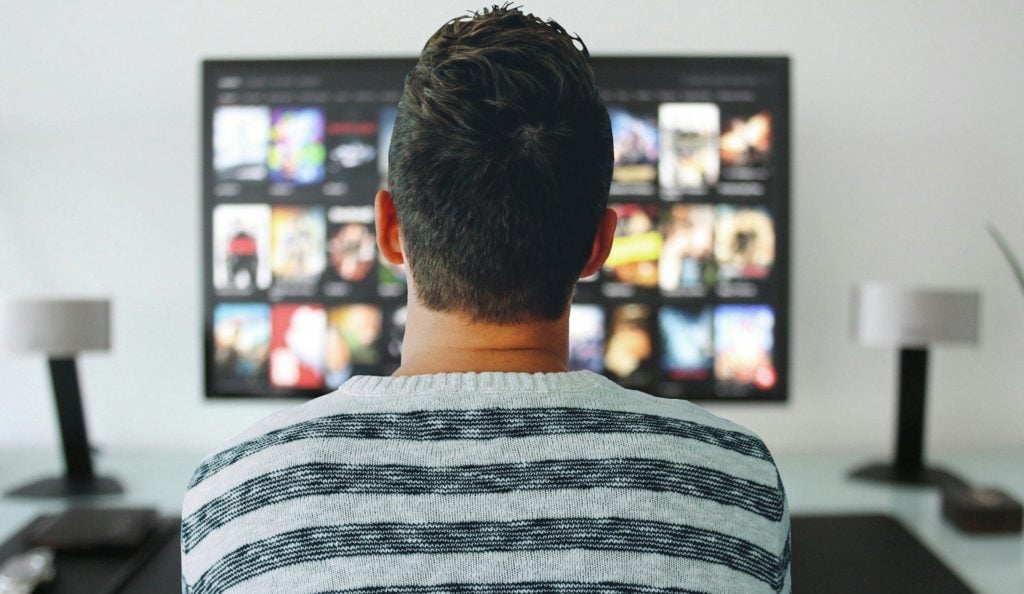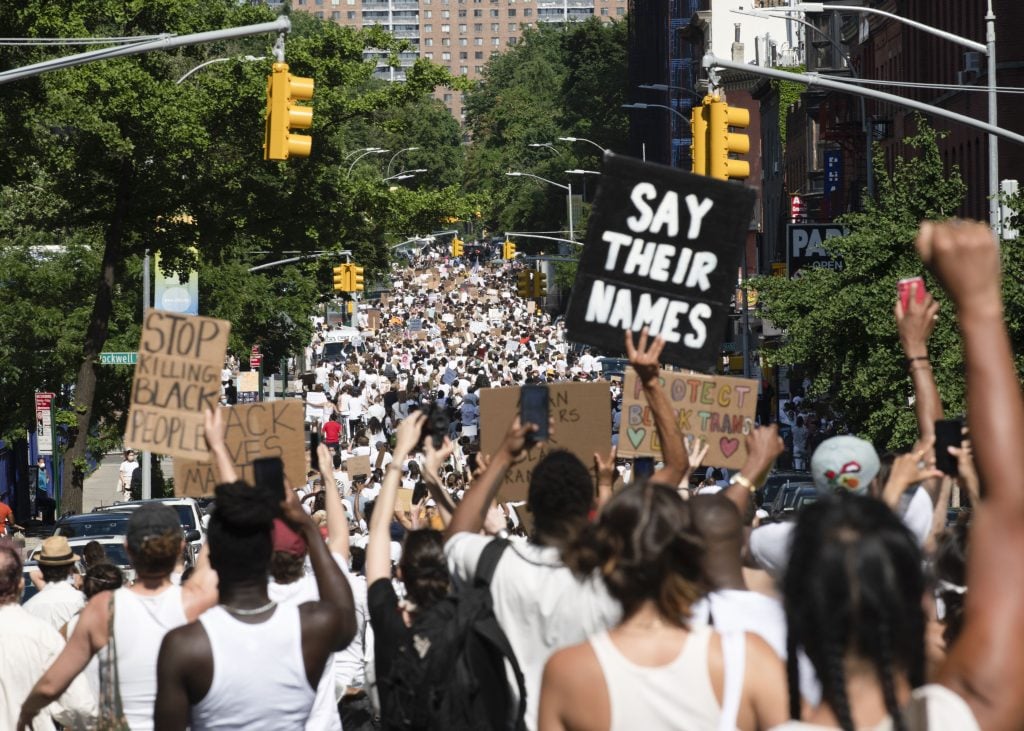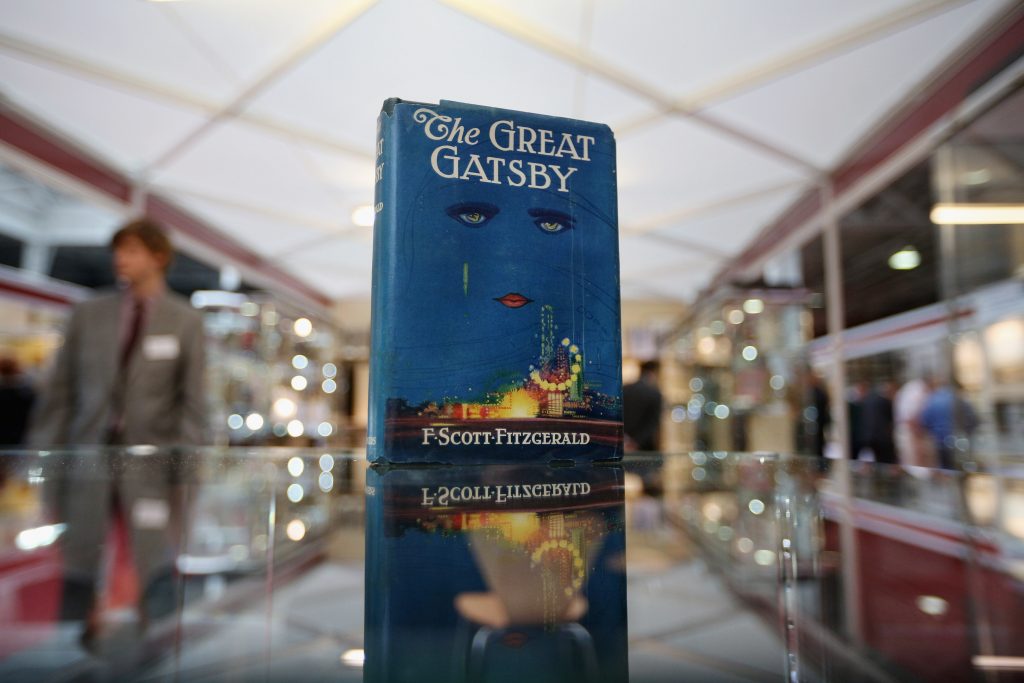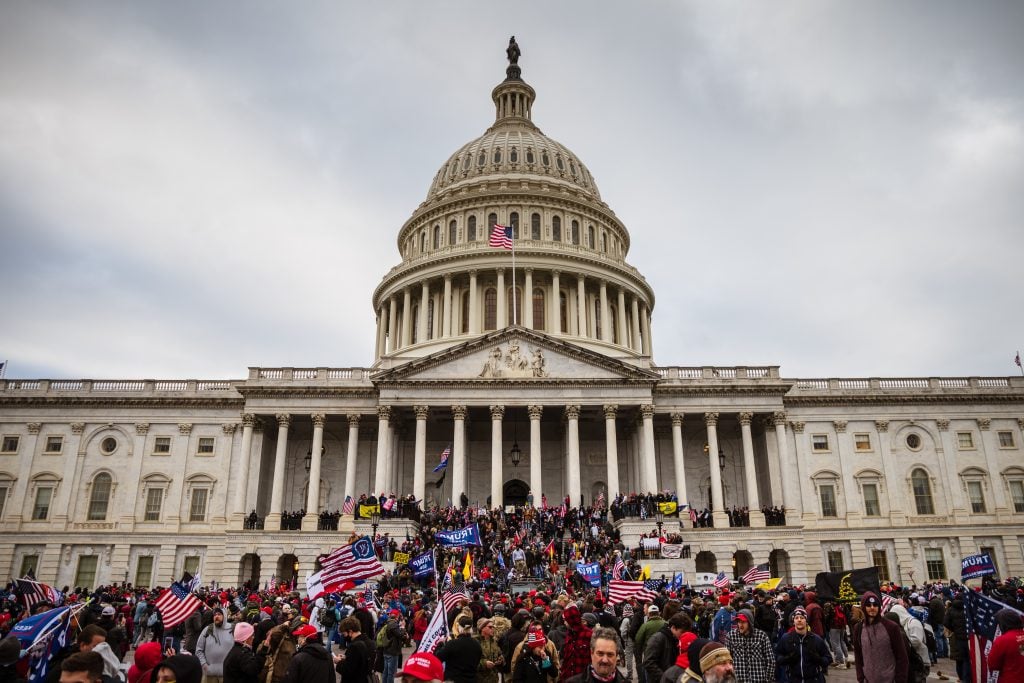Have you ever wondered what your rights are as an artist? There’s no clear-cut textbook to consult—but we’re here to help. Katarina Feder, a vice president at Artists Rights Society, is answering questions of all sorts about what kind of control artists have—and don’t have—over their work.
Do you have a query of your own? Email [email protected] and it may get answered in an upcoming article.
I want to create a photo or video installation that uses footage of the Capitol protesters, but I’d hate to be sued by one of them over likeness rights. Is that something I need to worry about?
The question you pose raises issues of likeness rights, rights of personality, and publicity rights. These are a special category of rights recognized by a number of US states that often dovetail with other intellectual property rights. But they essentially boil down to one idea: you should be the one to decide how your appearance is used. It’s what stops Duane Reade from tweeting a picture of you and calling it an endorsement and it’s the reason that faces are blurred in the background of reality television shows.
Particularly relevant here is a 1998 landmark case over a lithograph by artist Rick Rush that depicted Tiger Woods’s 1997 Masters victory at age 21. Wood’s camp claimed it would be illegal for others to profit from his name or likeness. But after years of appeals, Masters of Augusta was deemed “informational and creative” and therefore a form of “expression which is entitled to the full protection of the First Amendment” because, a judge ruled, artists should be able to paint public figures at public events.
In other words, the right to write about, photograph, or paint a “newsworthy” figure, whether a sports star or a Capitol rioter, is protected by the First Amendment.
Lastly, I’d like to direct your attention to the FBI’s dedicated wanted page about the event, which features images of the protestors in a bid to crowdsource their identification. These are images from Capitol security cameras posted by another federal agency, so they’re definitely fair use. Have at ‘em!

What happens if my source material is YouTube?
I work with Dinner Gallery in Chelsea, which is about to close a solo show by artist Michael Gittes that comprises nine televisions playing music videos and performances taken from YouTube; nine paintings featuring song lyrics; and a playlist of 68 songs. The user determines what song plays over each video. (Here’s a promo video to give you a sense.)
We’ve spoken to multiple law firms, none of which has a clear answer on whether we’re breaking any laws—we’ve also been accused of outright copyright infringement by a collector who used to be a music executive. We argue fair and transformative use, but hell, what do I know?! The internet’s merging with art has created some very interesting, very murky situations. What do you think?
This sounds like quite an ambitious show with a lot of moving parts (and many opportunities for an IP slip-up). Let’s try to answer the question by taking a look at case law and what it has taught us about fair use.
In 1994, Roy Orbison’s music label sued 2LiveCrew’s label over their take on Orbison’s classic “Oh, Pretty Woman.” 2LiveCrew’s version used the original’s signature guitar twang but replaced Orbison’s lyrics with new ones that read like they were written by someone who was trying to be misogynistic, but had never actually met a woman.
Lawyers for 2LiveCrew argued that the song was written as a satire or parody, which transformed the original enough to qualify as fair game. The Supreme Court agreed. This was the first time that the Supreme Court adopted the “transformative use” framework, which has, in the 20-some years since, come to dominate fair use analysis in such cases.
Now, back to your show. Your artist is not trying to make a quick buck, and the work does not deprive the copyright holders of any money, as it does not satisfy the cravings of those trying to listen to the original music or watch the existing YouTube videos. This puts at least two points in your favor in the four-fold test for fair use that we often return to in this column.
So while it’s true that the music industry seems to be feeling their oats these days, it appears as though your installation is arguably in transformative territory. To quote the master Orbison himself, “No one could look as good as you. Mercy!”

Thousands fill the streets in support of Black Trans Lives Matter and George Floyd in NYC. (Photo by Michael Noble Jr./Getty Images)
I saw the news that six Black photographers are suing BuzzFeed for embedding their Instagram photos of this summer’s protests in a post without the photographers’ consent. Obviously, this practice is unethical—but is it illegal? Are you or are you not allowed to embed Instagram images on other platforms?
It’s clear that the photographs included in the Buzzfeed story were obtained with great difficulty—so it’s no wonder the photographers feel the publication acted lazily and even illicitly. The article in question, “Here Are Powerful Pictures Of The Protests Through The Eyes Of Black Photographers,” doesn’t even feature any writing. It’s just a collection of Instagram posts.
And this is not Buzzfeed’s first sloppy rodeo. The outlet was fined in August for “borrowing” a photo from the New York Post and removing the photography credit (it’s worth noting that Buzzfeed may have been in trouble even if they’d kept the credit, since crediting the owner of an image is not the same as actually obtaining permission for use of the copyrighted material). The case, Mango v. Buzzfeed, may turn out to be an important precedent for interpreting the Digital Millennium Copyright Act, which governs such usage.
Unfortunately, as with many aspects of life, Instagram complicates things. We all know that using social media involves waving certain rights, and photographic copyrights may be one of them. Two lawsuits over the summer against Mashable and Newsweek respectively both involved circumstances similar to those in the Buzzfeed case. These weren’t innocent mistakes: the websites had tried to license the images from the account holders and turned to Instagram only after their initial requests had been rejected.
The courts concluded, however, that in uploading their images to Instagram, the photographers granted the social-media platform “a non-exclusive, fully paid and royalty-free, transferable, sub-licensable, worldwide license.”
In non-legalese, that means the photographers gave their consent to Instagram to use their photos however Instagram might want. The news outlets, in turn, didn’t technically embed the photographs, but the Instagram posts, so they’re in the clear. Going off these examples, Buzzfeed would seem to be as legally blameless as Newsweek and Mashable.
For whatever it’s worth, Instagram has told Ars Technica that it does not agree with this interpretation, but case law is rapidly evolving and trying desperately to keep up with the pace of technology. There is no telling how the most recent Buzzfeed case will end up. But considering that Instagram is at the heart of the government’s antitrust lawsuit against Facebook, it might want to consider what it can do for these photographers—if only to earn a little good press.

A first edition of F. Scott Fitzgerald’s The Great Gatsby at the London International Antiquarian Book Fair in London, England in 2013. (Photo by Oli Scarff/Getty Images)
I saw a lot of people tweeting about the fact that, now that it’s 2021, The Great Gatsby has finally entered the public domain. What does that actually mean for creatives? Can we write fan fiction about TJ Eckleburg now? Can I stop paying royalties every time I use this gif?
You laugh, but someone actually did just publish a novel that delves into Nick Carraway’s backstory. After all, don’t we all want to hear more from that vaguely sad man who goes to way too many parties on the East End and just turned 30? (Just kidding, that review is a rave!)
In the US, the term “public domain” dates back to a Supreme Court ruling from 1896 (although the concept had existed long before that) and has come to refer to intellectual property for which the copyright has expired. In this country, copyright usually exists for the life of the artist plus 70 years.
Gatsby, however, is an exception to this rule. Works copyrighted between 1922 and 1977 received an extension under the 1998 Copyright Term Extension Act, also known as the Mickey Mouse Protection Act thanks to Disney’s lobbying efforts. (FYI, Mickey Mouse’s copyright is now set to expire in 2024; I would imagine that the Baby Yoda Protection Act is being drafted by Disney’s friends in Washington as you read this).
Now that Gatsby is out of copyright, anyone can publish it. Photocopy it and make it a zine if you want to. Turn it into a true-crime podcast about who killed Myrtle Wilson. Adapt the story into a film from the perspective of a waiter at one of Gatsby’s parties—all without forking over any cash. (Ever wonder why there are 900 versions of Dracula and Frankenstein, including the underrated version where Robert De Niro plays the monster?)
For better or worse, The Great Gatsby being in the public domain means we all own it now. I hope this serves as a friendly reminder of how important copyright really is.









